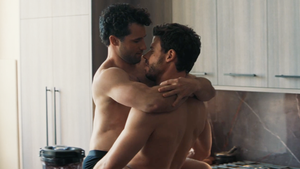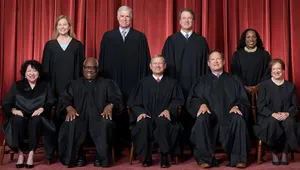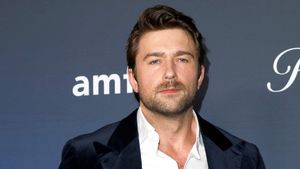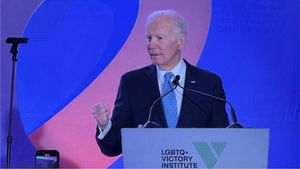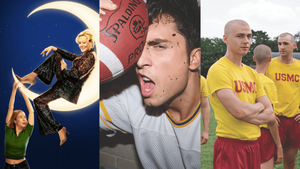July 10 2008 11:00 PM EST
CONTACTCAREER OPPORTUNITIESADVERTISE WITH USPRIVACY POLICYPRIVACY PREFERENCESTERMS OF USELEGAL NOTICE
© 2025 Pride Publishing Inc.
All Rights reserved
All Rights reserved
By continuing to use our site, you agree to our Privacy Policy and Terms of Use.
Our travel guides are frequently updated. This guide was last updated 10/07. Still, there are places that are bound to have closed or changed since our last update. Use the listed phone numbers to call ahead, and please let us know of any corrections you discover, or new places of interest.
It might sound trite to say that Montr?al feels the most "foreign" of Canada's cities, given the obvious language difference. But there's more to it than just language. Montr?al's customs are more European, its people more insulated against American influence than Toronto or Vancouver. A majority of people here are bilingual, and close to a third are trilingual, given the long-standing Jewish, Italian, Portuguese and Greek communities and the recent waves of Caribbean, South American, and Asian immigration. Many natives will break into English with ease if they sense that you're not fluent in French, giving the impression of a city that's entirely comfortable being both very Qu?becois and very Canadian, and making the most mundane Montrealer seem urbane and worldly.
Apart from its majority-French roots, the city was historically founded by huge enclaves of Scottish (the founder of McGill University being one of the most prominent), English, Irish and Eastern European immigrants at the turn of the century. But throughout the Province of Qu?bec's long, protracted battle for secession from Canada (the last referendum indicated a 51% vote against secession in the province of Qu?bec although majorities of both English- and French-speaking Montrealers voted against secession), many of the city's Anglo population left for parts west, mainly Toronto, which was a major factor in building that city's commercial and financial power. However, Montr?al is seeing many English speakers coming back to the city, as well as numerous international immigrants and investors, with residences in western sectors of the city, as well as in the trendy Plateau Mont-Royal area being snatched up at an incredible rate. The gay section around St. Catherine Street has especially experienced a rebirth in recent years; what were once boarded-up windows are now thriving cafes and bars.
Though Toronto is taller and has a denser downtown than Montreal, the two cities are similar in size and in population (just over three million each). Torontonians have a brusque, clipped manner that has grown icier as the city has grown bigger and bigger; Montr?al's residents combine a Parisian hauteur with a more European, sanguine love of food, wine and good times. Like Paris and unlike Toronto, Montr?al's downtown is animated and populated day and night, seven days a week. Flanked on the south by the mighty St. Lawrence River and presided over by the mountainous Parc du Mont Royal, Montr?al has a wealth of natural beauty, as well as urban beauty -- its recently revamped old quarter, Vieux Montr?al, and old port, Vieux Port, are romantic neighborhoods of churches, converted warehouses, museums and public squares. Montr?al is a cultural capital of Canada, with numerous annual festivals in theater, dance and music. The International Jazz Festival is the largest in the world; and June's Grand Prix Car Race, held in Montreal since 1978, is the only Formula One race in North America. Cirque du Soleil was founded in Montreal, and still maintains its headquarters here.
Part One | Part Two
Related Articles:
Montreal: Where to Stay
Montreal: Where to Eat
Montreal: Where to Play/Meet
Montreal: What to See & Do
Montreal: Where to Shop
Montreal: Resources
From our Sponsors
Most Popular
Just in Time for Pride – The 15 Gayest Cities in the World in 2023
April 12 2023 6:47 PM
The 13 Least Visited National Parks
January 07 2023 5:00 AM
Get Soaked! with These 35+ Steamy Pool Pics From This Year’s White Party
May 25 2023 9:29 AM
20 Thirsty Pics of #SniffiesRush Campaign Celebrating Frat Life
December 16 2022 3:19 PM
25 Thirsty Pool Party Pics from White Party Palm Springs 2022
April 14 2023 5:55 PM
Sniffies Reveals Horniest Cities
December 22 2022 4:15 PM
15 Thirsty Pics of Moot Lingerie for Men
March 21 2023 7:41 AM
The 7 Best Nude Beaches for Gays in the U.S.
June 09 2022 4:00 AM
The Most Dangerous (& Safest) Countries for LGBTQ+ Travel
March 22 2023 5:00 AM
Outtraveler: Featured Video
Latest Stories
A gay solo traveler goes bear-hunting in Barcelona
November 13 2025 4:31 PM
More than a month: Prioritizing LGBTQ+ health year-round
October 15 2025 12:27 PM
UNITY at Sphere is the perfect Las Vegas attraction for gay tourists
October 03 2025 5:09 PM
Malta is the secret Pride destination where gays are going wild
September 18 2025 4:47 PM
What is a Jubilee? These Catholics just became the first LGBTQ+ people to participate
September 08 2025 12:49 PM
Marriage equality will be banned in these 31 states if Obergefell is overturned
September 08 2025 10:40 AM
Explore the camp, parties, and parade of Provincetown Carnival 2025
September 05 2025 7:03 PM
My big gay Broadway summer
August 27 2025 9:27 AM
Explore Zurich with Swiss style icon Susanne Bartsch
August 25 2025 9:46 AM
Splash House is the secret Pride festival where gays can truly let loose
August 22 2025 9:00 AM
When love sinks, set sail for the Hudson Navigator
August 15 2025 6:00 AM
Need an escape from American anxiety? Consider Colombia.
July 16 2025 11:47 AM
This heavenly hotel in the heart of Hell's Kitchen is the perfect oasis
June 26 2025 6:00 AM
Top 10 LGBTQ+ beach towns perfect for Pride and summer fun
June 05 2025 1:54 PM
Checking out: nhow London, the city’s coolest hotel
June 02 2025 8:45 AM
Cruising the world helped this gay couple find lasting love
May 31 2025 2:45 PM
Gays went feral at an iconic Pride celebration in Pensacola, Florida
May 30 2025 6:00 AM
Wilderness, woods, and Wigstock: Drag icons light up the Catskills
May 28 2025 12:17 PM
Out and About with Christian Cooper
May 28 2025 11:07 AM



















































